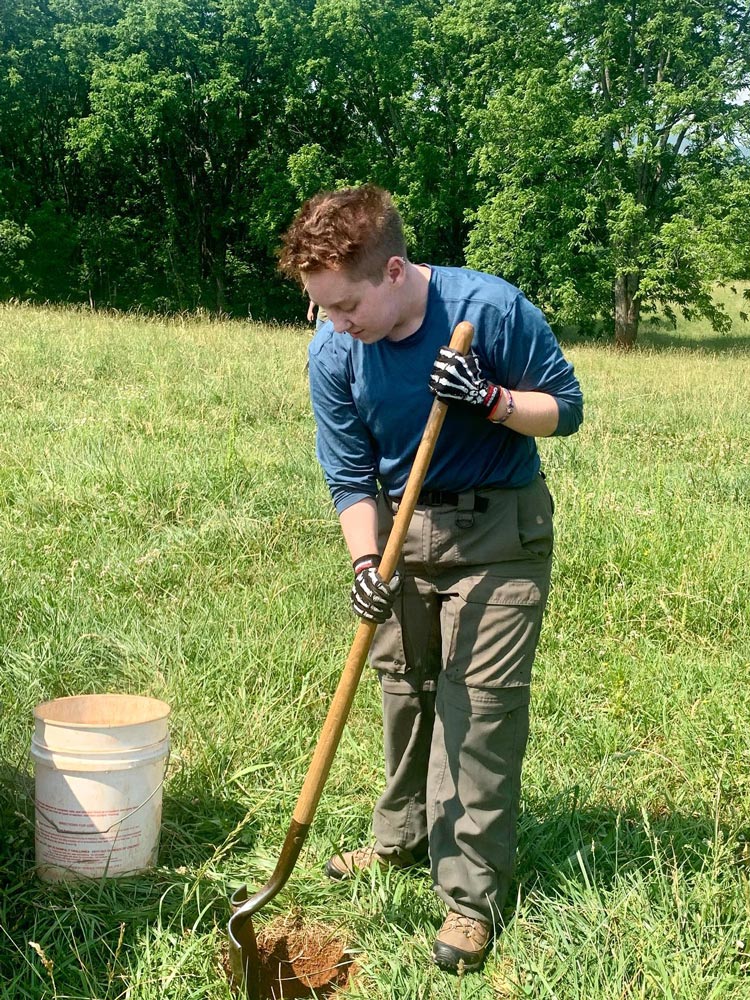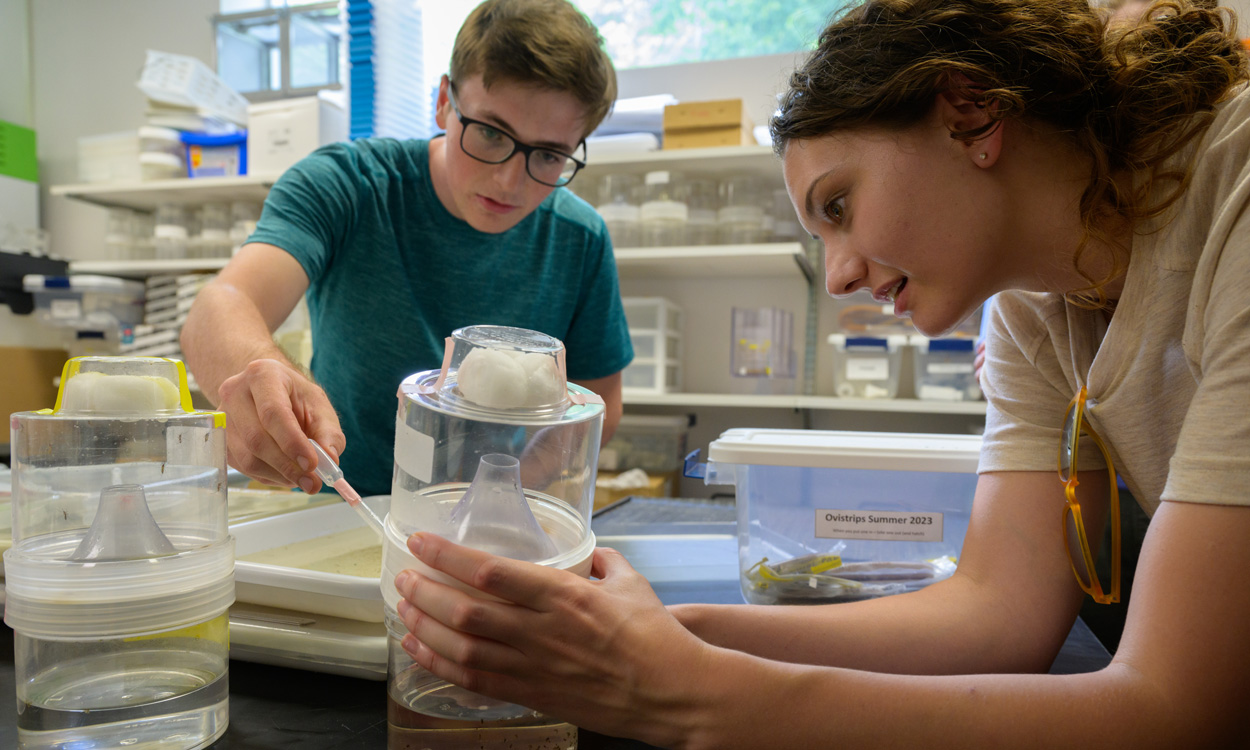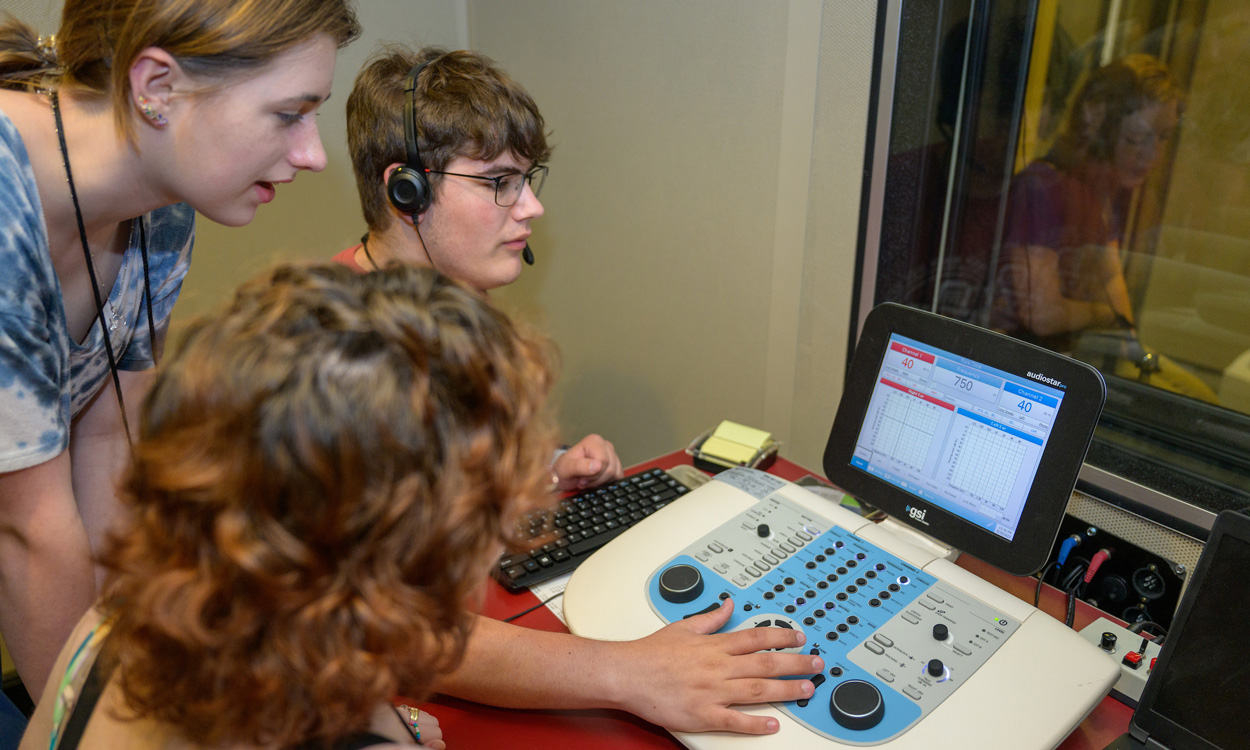A third summer of field school at Watauga unearths new discoveries

Associate professor Jane Eastman (top) and research assistant Kelly Hoover excavate a root cellar that appears to have been used to store sweet potatoes in the mid to late 1700s.
By Brooklyn Brown
A groundbreaking, non-invasive archaeological dig is underway at the historic Cherokee township of the Watauga mounds in Macon County.
Western Carolina University’s Sequoyah Distinguished Professor Brett Riggs and Jane Eastman, associate professor, are in their third season of hosting an archaeological field school at the ancient site, teaching WCU students best practices for non-invasive excavations and unearthing centuries-old Cherokee history and culture.
Riggs and Eastman presented their most recent findings at the 2nd Annual Teach What You Know, Share What You Have conference hosted by the Kituwah Preservation and Education Program in WCU’s Bardo Arts Center. The field school discovered significant astronomical orientations of the mounds at Watauga, and traced their orientation to other mound sites in Western North Carolina.

Field school intern Autumn Hall sifts through excavated soil.
“My favorite thing about Watauga is the interconnectedness of the landscape with time and space,” said Autumn Hall, a senior majoring in history and anthropology. “We got to attend the conference and listen to Dr. Riggs and Dr. Eastman share this incredible information with the Cherokee community.”
“We are learning from these discoveries that the technology they used and the way they interacted with each other was very advanced,” said Gabe Ghammashi, a recent WCU anthropology graduate and current field tech. “It's interesting to learn about and to show that these people had a lot more complexities than we tend to think about ancient civilizations.”
Riggs and Eastman want to ensure that the Cherokee community is benefitting from this research. “It’s incredible knowing that this stuff sparks conversations and thought among people in the community,” Riggs said. “There were 150 Cherokee people visiting the Watauga site during the conference. To interact with folks asking questions, sharing their thoughts and feelings about how these places affect them lets us know that this has a big impact.”
The team is still researching the chronology of the site, but posit that the Grant or Rutherford expeditions burnt down the township during the American Revolution.
“When Cherokee people are at these sites and they're speaking in the Cherokee language that just sort of sends chills,” Eastman said. “Hearing Cherokee people speaking their language at these places is one of the greatest things to me.”
Mounds are a sacred and ancient Cherokee earthwork, so it is important that the field school avoid invasive excavation. Not only that, but the site is also filled with delicate remnants of Cherokee culture. The team uses magnetometry and gradiometry to excavate the site.

Field Tech Ollie Morrison at the Watauga site.
“In our first summer, we used the radiometer over “Mound B,” the second mound,” said Kelly Hoover, recent archaeology and biology graduate and current research assistant. “We were downloading the collection data in the lab and all of us were sitting around waiting to see, because we thought something was there, but we weren’t sure. And then we just see Mound B in its entirety. I just remember feeling like a rush and the air was like electric when we saw Mound B. It really solidified for me that I was in the right field.”
“Archeology is getting to the point of reconnecting and actually helping to rebuild cultures, instead of just taking everything,” said recent anthropology graduate and current field tech Ollie Morrison. “That's really, really exciting to me – getting to take stuff from history and actually reconnect it with people today and really build that relationship with the community.”
Like Morrison, Hall is also appreciative of this new wave of archaeology dedicated to people and communities.
“My previous field experiences are with forensic anthropology,” she said. “It’s a nice change of pace from looking into death and all the processes that go with that, to looking into life and connecting people with their living history. It's just amazing to see the interconnectedness and that relationship that’s still there. It’s been really exciting to have a summer full of life.”

